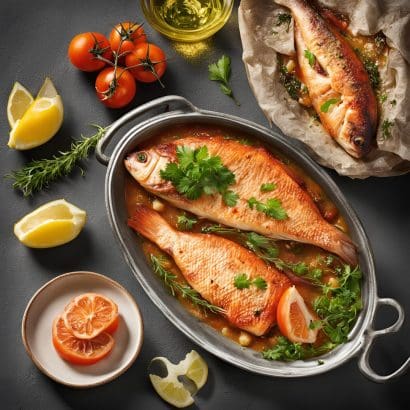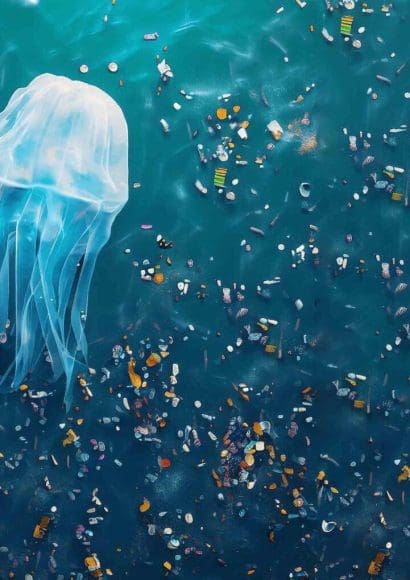
The impact of plastic on marine life is an environmental issue that has reached alarming proportions. Every year, tons of plastic waste end up in the oceans, wreaking havoc on marine fauna and disrupting ecosystems. This article delves into how plastic is transforming our seas and what actions we can take to curb this crisis.
Contents
The Global Problem of Plastic in the Oceans.🐟
1. The Growing Production of Plastic.
The global production of plastic has grown exponentially since the second half of the 20th century. In a world where plastic is omnipresent, it’s almost impossible to imagine life without it. However, this material, which has revolutionized our daily lives, has also left a profound mark on the environment. Currently, over 300 million tons of plastic are produced annually, and a large portion of this ends up in the oceans. This waste not only floats on the surface but also sinks to the depths of the seas, affecting everything in its path.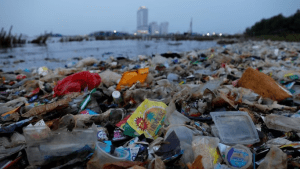
2. Microplastics: An Invisible but Deadly Threat.
Moving forward, it is crucial to understand that not only large plastic debris is dangerous; microplastics also pose a significant threat. These tiny fragments, measuring less than 5 mm, originate both from the degradation of larger plastic objects and from everyday products like exfoliants and detergents. Although their size is minuscule, their impact is immense. Microplastics are easily ingested by marine fauna, causing internal injuries, digestive blockages, and, in many cases, death.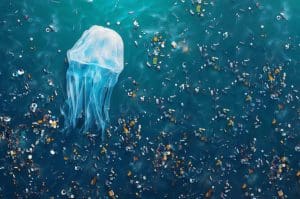
3. Ghost Nets: A Silent Killer.
But plastic in the oceans doesn’t only appear in fragment form. Abandoned or lost fishing nets, known as “ghost nets,” represent another major threat. These nets continue to trap and kill animals long after they have been discarded. Turtles, dolphins, sharks, and other marine animals become entangled in these invisible traps, often with no chance of escape. This problem is particularly severe because ghost nets are difficult to detect and remove, perpetuating their lethal impact over time.
Discover 5 recipes with Vieira fish for a delicious and sustainable seafood experience.
Direct Impact on Marine Life.🐟
4. Plastic in the Food Chain: An Ascending Danger
As we delve deeper into the issue, it’s essential to highlight how plastic directly affects marine life through the food chain. Fish and other marine organisms mistake plastic for food, ingesting it without realizing the danger it represents. Once ingested, plastic can cause a series of health problems in these animals, from malnutrition to intestinal blockages. Moreover, the plastic that accumulates in their bodies doesn’t disappear; instead, it transfers to predators, including humans, who consume these animals. This cycle poses serious risks to human health, as the toxic chemicals associated with plastic can cause a variety of health issues.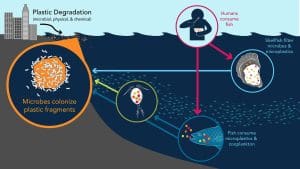
5. Endangered Species: An Uncertain Future
The impact of plastic isn’t limited to individual animals; it also endangers the existence of entire species. Many marine species are at risk of extinction due to plastic pollution. Sea turtles, for example, mistake plastic bags for jellyfish, which can lead to fatal intestinal blockages. Seabirds, on the other hand, often ingest plastic fragments floating on the water’s surface, which can also be deadly. The extinction of these species is not only a loss for biodiversity but also has consequences for marine ecosystems and, ultimately, for humanity.
Indirect Impact on Marine Ecosystems.🐟
6. Alteration of Marine Habitats: A Cascading Effect
In addition to direct impacts, plastic also alters marine habitats, which can have devastating effects on ecosystems. For example, coral reefs, which are essential for marine biodiversity, can suffer damage when covered by plastic waste. Plastic can smother corals, preventing their growth and reproduction, which in turn affects all the species that depend on them. This is a clear example of how the impact of plastic extends beyond individual organisms, altering the very foundations of marine ecosystems.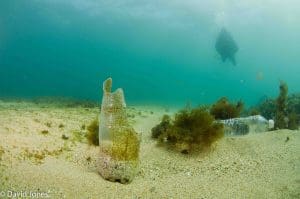
7. Bioaccumulation and Toxicity: A Growing Risk
Another indirect but critical consequence of plastic in the oceans is the bioaccumulation of toxic substances. As plastic breaks down in the water, it releases a variety of harmful chemicals, such as bisphenol A (BPA) and phthalates. These chemicals can be absorbed by marine organisms, and when these are consumed by other animals, the toxins become concentrated at higher levels of the food chain. This process of bioaccumulation increases the toxicity of pollutants as they ascend the food chain, posing a significant risk to both marine life and humans.
Learn more about the study of corals and their importance to marine ecosystems and biodiversity.
Solutions to Mitigate the Impact of Plastic in the Oceans.🐟
8. Reduction and Recycling: Toward a Circular Economy
To address the problem of plastic in the oceans, it’s crucial that we start at the root: reducing plastic production. This involves a shift toward a circular economy, where materials are reused and recycled instead of being discarded. Although many plastics are recyclable, the reality is that only a small percentage actually gets recycled. Improving recycling infrastructure and promoting the reduction of disposable plastics are essential steps to reduce the amount of plastic that ends up in the sea.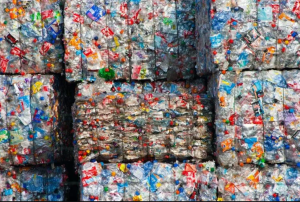
9. Innovations in Materials: The Future of Sustainability
In addition to reducing plastic use, it’s crucial to develop and adopt more sustainable materials. Bioplastics, which break down more quickly and with less environmental impact, represent a promising alternative to traditional plastic. However, for these innovations to have a significant impact, they need to be adopted on a large scale by the industry. Investing in research and development of these sustainable materials is a crucial step in tackling the plastic crisis in the oceans.
10. Education and Awareness: The Key to Change
Finally, education and public awareness are fundamental to solving this problem. It’s vital that people understand the impact of plastic on marine life and how their daily decisions can contribute to or help solve this issue. Awareness campaigns and educational programs can play a crucial role in reducing plastic use and promoting more sustainable behaviors. Only through a collective mindset shift can we make a real difference in the fight against plastic pollution.
FAQs About the Impact of Plastic on Marine Life.🐟
How does plastic affect marine animals?
Plastic affects marine animals in multiple harmful ways. Many species mistake plastic for food, leading to ingestion that can cause internal injuries, blockages, and death. Additionally, entanglement in plastic debris, such as fishing nets, can lead to physical harm, impaired mobility, or drowning. Over time, these impacts reduce survival rates and threaten entire populations.
What percentage of ocean plastics comes from land?
Approximately 80% of ocean plastics originate from land-based sources. This includes plastic waste that is improperly disposed of, littered, or carried by wind and rivers into the oceans. The remaining 20% comes from marine activities, such as fishing and shipping. Transitioning from land to sea, plastic waste spreads widely, impacting even the most remote marine environments.
What solutions exist to reduce plastic in the oceans?
Several solutions can help reduce plastic in the oceans. First, reducing plastic production and use is crucial, focusing on banning single-use plastics and encouraging alternatives. Second, improving waste management systems and increasing recycling rates can prevent plastic from entering the ocean. Finally, public education and global collaboration are key to changing consumer behavior and promoting sustainable practices. By addressing both prevention and cleanup efforts, these strategies aim to curb the flow of plastics into marine environments.


